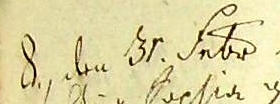Leap Year
- 28. February 2016 - Anniversary, General, Historical Events, Knowledge

What we experience as one year is exactly the amount of time it takes the earth to circle the sun. In fact, this does not take exactly 365 days but 365 days and 6 hours. For our calendar year to nevertheless remain synchronized with the so-called tropical (or solar) year, the leap year exists: every couple of years February 29 is added to the calendar year; a leap year therefore consists of 366 days. Such as 2016 has been.
Leap days or months were also common in earlier cultures; Julius Caesar finally established the solar calendar and with it a leap year rule, adding one day every four years. The Julian calendar was born.
February 29 was the leap day now as "Februarius" was the last month of the Roman calender to which one day was now simply added.
This solution was not very precise, as the Julian calendar did not closely follow the path of the sun and the seasons subsequently shifted within the calendar year. In the 16th century, the Gregorian calendar finally replaced the Julian. It is still in effect today and, via a more complicated calculation, determines which years will be leap years.
So the issue of leap days already proposed a conundrum to our ancestors. In fact, during our research we once came across a document on which the date "February 31" was noted. We suppose the author was simply mistaken about the month.

0 comments